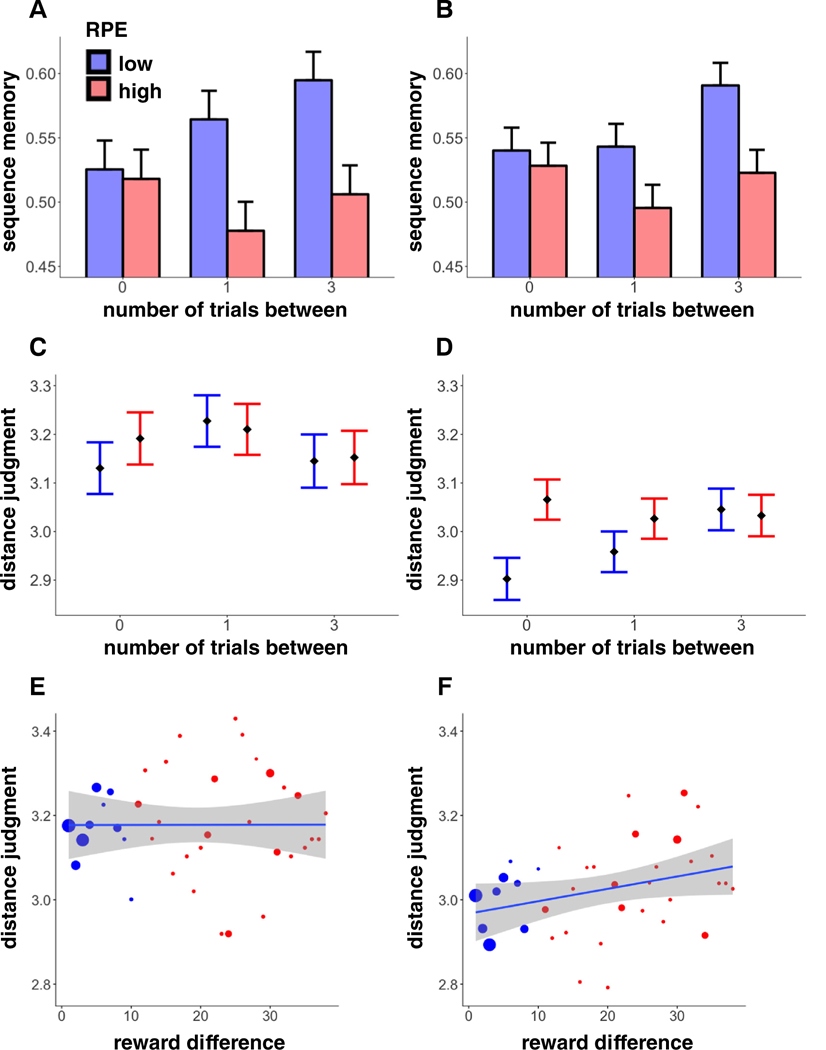Fig. 3.

Sequence and distance memory results. A-B. Sequence memory in Exp. 4 (A) and its replication (B) as a function of RPE event and presentation distance (number of trials) within scene pairs. Sequence memory for pairs that spanned a high-RPE event was worse; this was driven by pairs that did not include the high-RPE event itself (i.e., pairs that were 1 or 3 trials apart). C-D. Distance judgment in Exp. 4 (C) and its replication (D) as a function of RPE event and presentation distance (number of trials) within scene pairs. High-RPE events were perceived as more distant from each other only in the replication experiment, a result driven by pairs that included the high-RPE event itself (i.e., 0 trials-between). E–F. Distance judgment as a function of the reward difference between scenes in Exp. 4 (E) and its replication (F). In the replication experiment, we found that greater reward difference between scenes, which was a proxy for the magnitude of the RPE event that had occurred between them, led to greater perceived distance. Note that no statistics were run on these averaged values, and they are plotted here for illustration only. Size of the dots reflects the size of that sample. Shaded regions reflect 95% confidence intervals. Error bars represent SEM.
